With the budget from the new rural construction programme, in 2012, the Hanoi Department of Agriculture and Rural Development started to implement 28 agricultural models which contribute to changing the face of rural areas and increasing the income of the farmers.
We visited the safe vegetable production model in Dai Lan of Duyen Ha Commune, Thanh Tri District during harvest time and witnessed busy farmers working in the fields of vegetables. During a talk with us, Dang Ba Thang, Chairman of Dai Lan Vegetable Cooperative pointed to a water treatment plant in a vegetable field and said: “The vegetables in Dai Lan have revived thanks to that plant. Duyen Ha Commune has received 17 billion dongs from the budget of the new rural programme to build a water treatment plant and a fruit and vegetable processing factory. Moreover, 1,200 farmers who are members of Dai Lan Vegetable Cooperative have attended the training courses on safe vegetable production held by the Hanoi Agricultural Extension Centre.”
«...
In 2012, 33 models were implemented in Hanoi, including 28 city models and 5 central models. Most of these models have a large scale and high concentration. |
We walked around the fields of tomatoes, cabbages and cucumbers and saw a strong revival of this suburban area. Old farmer Chu Van Thanh who was harvesting the red ripe tomatoes on the final beds said: “Duyen Ha land only grows commercial vegetables. We thought we had a big consumption market in Hanoi and we would not be worried about the outlet for the products, but the vegetable cultivation was still unstable, like the boat before the storm. The situation in which the vegetables are sold at an expensive price at the beginning of the harvest and at a cheap price at the mid season and are discarded at the end of the harvest repeated and became an obsession of the farmers. There were times that we thought we had to give up and leave our homes for a living. But things have changed and now Dai Lan vegetables have a stable market with customers’ orders, they are even listed on the stock and real estates markets.”
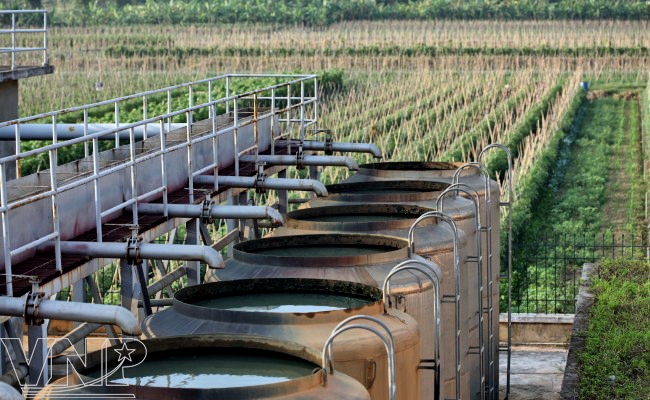
Dai Lan Water Treatment Plant in Duyen Ha Commune, Thanh Tri District works effectively. |
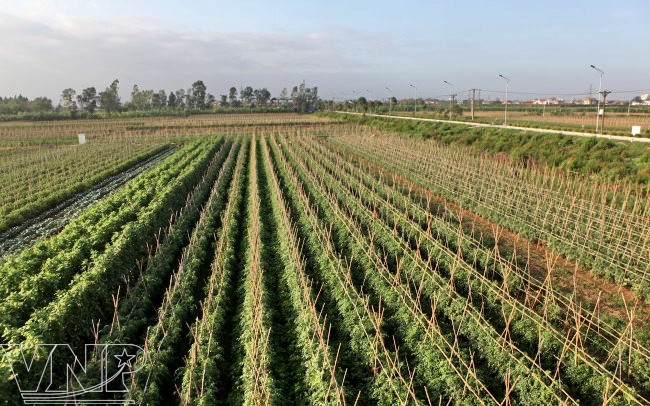
Dividing vegetable fields into larger plots provides favourable conditions for locals to cultivate. |

Using nylon to protect vegetables from rain and sunlight. |
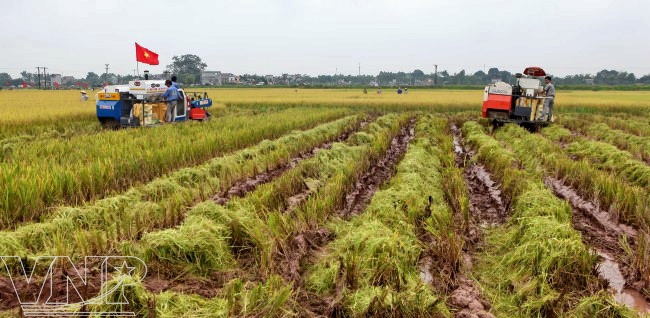
Harvesting using combines on a field in Hong Phong Commune, Chuong My District. |
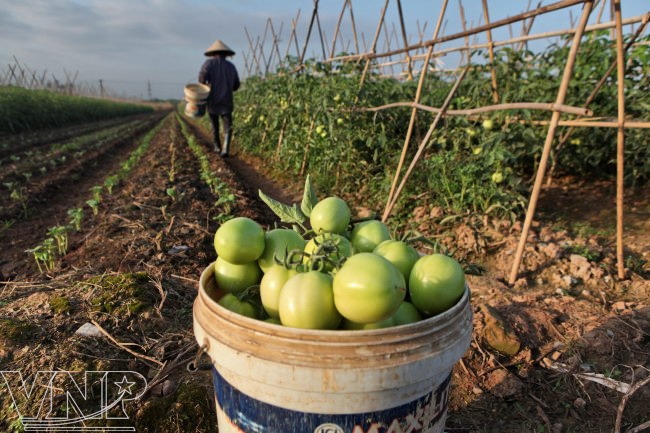
Agricultural models of the Hanoi Department of Agriculture and Rural Development bring farmers great benefits. |

A model of growing mushrooms is applied in the districts of Soc Son and Quoc Oai. |
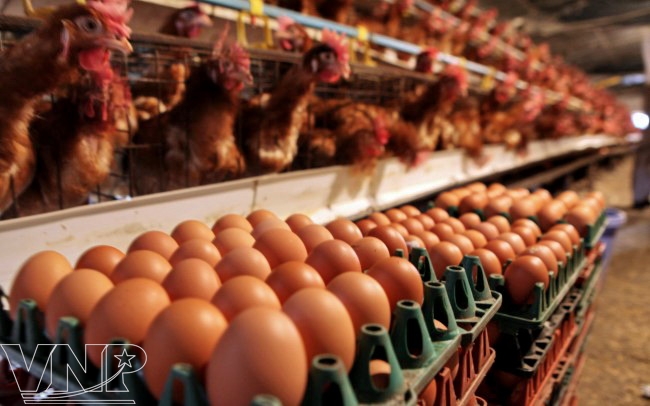
Hong Duong Commune in Thanh Oai District is well known for large poultry farms. |
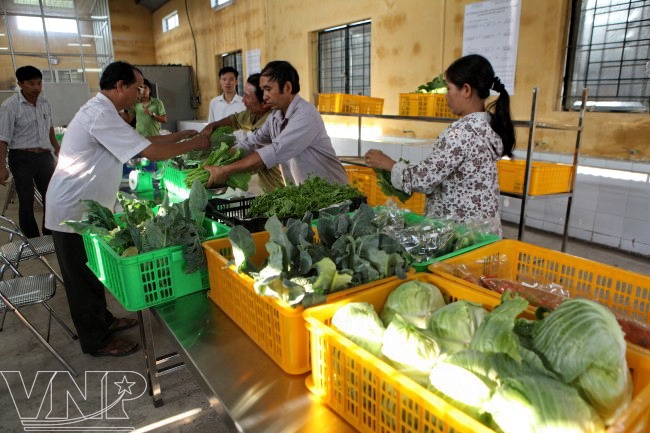
Classifying fruit, bulbs and vegetables at Dai Lan Vegetable Cooperative. |
Amazed, we asked Dang Ba Thang, Head of Dai Lan Vegetable Cooperative about this. He said: “Dai Lan safe vegetables have been stamped. Since mid-2012, with the guidance of the Sub Plant Protection Department, the website for safe vegetables, www.sanbanbuon.vn, has been established to connect the vegetable growing areas and the consumers. Every day, the customers can access the website to place orders with us. We also provide the cooperative’s members with the safe vegetable certifying stamps and the wrapping of Dai Lan Cooperative to show the source of the vegetables to win customer’s trust. Every year we supply the markets in Hanoi and the surrounding areas with over 3,500 tonnes of safe vegetables.”
Leaving the vegetable growing area of Duyen Ha we visited Hong Duong Commune, a land of traditional crafts, in Thanh Oai District. All of the seven villages in the commune have their traditional crafts. Now, apart from their traditional crafts they have been known for poultry raising farms of a large scale. Talking with us, Nguyen Van Hien, Vice Chairman of Hong Duong Commune People’s Committee said: “In the past, the commune had a large area of fallow alluvial and alkaline land. But, since the Hanoi Agricultural Extension Centre provided the commune with investment funds, technical guidance and training courses, the models of husbandry farms have been established and yielded economic efficiency.”
He advised us to visit the farm owned by Nguyen Van Thu. Thu cheerfully told us his story, from being a duck raiser to becoming the owner of a farm. He said: “Previously, we raised the poultry mainly in the garden to have food for daily life and sell to the neighbours. But, after attending the training courses held by the Hanoi Agricultural Extension Centre and receiving the centre’s loans, I invested in building large farms to raise fish, ducks and chickens. For the first few litters, the efforts of me and my family were in vain due to the bird flu. From these lessons, I have focused on poultry raising knowledge. Gradually, my poultry herds have increased, from only several dozens of chicken which were raised naturally to two farms with 180,000 hens raised in a close model. Everyday, I sell about 3,000 eggs to the market.”
We visited two of the 28 agricultural models implemented in Hanoi. These sustainable and large-scale models are aimed at increasing the output and income and reducing the labour. They have met the farmers’ aspiration of taking advantage of the inefficient agricultural land for production. Now, it can be confirmed that these 28 agricultural models involving 12,000 households serve as an impetus to help bring the cause of new rural construction to a success.
Story: Thong Thien - Photo: Tran Huan